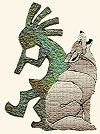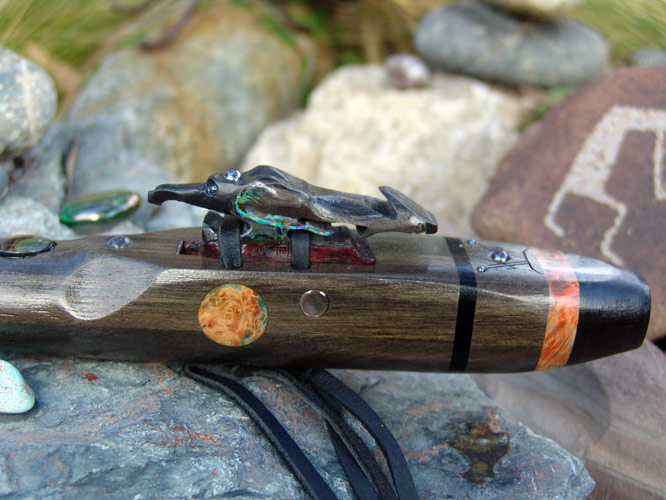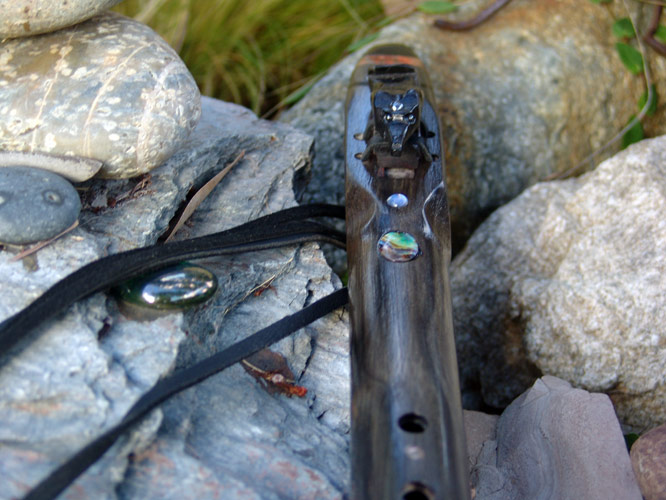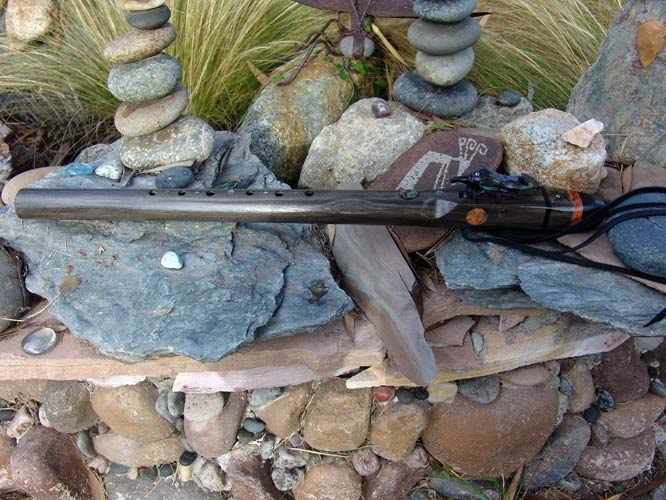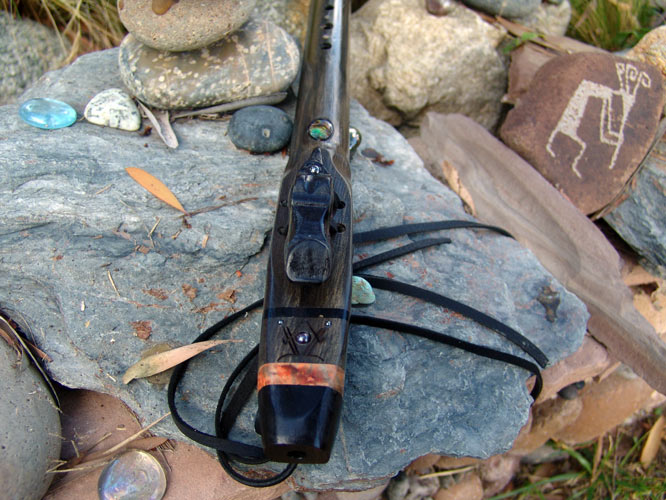FREE DOMESTIC SHIPPING
Alowood Em…
SOLD
No longer available anywhere in the world, this material started out as plantation grown Radiata pine, in New Zealand. Colorized starch was then pressure forced through the lumber, creating a hardwood from the pine.
This instrument is 22-1/4 inches in length, with a one inch bore or sound chamber diameter. Woods used in the construction starting at the mouthpiece, include the ebony Alowood, twice dyed/stabilized box elder burlwood, more alowood, and Macassar ebony. 19mm discs of the box elder burl were also inset into each side of the compression chamber. The fetish block is cut from the alowood, and bonded to Oklahoma red cedar, for moisture control.
Inlay, starting at the mouthpiece. Includes a 6mm freshwater black pearl, flanked by 2.3mm hematite beads, while each side of the compression chamber is set with matching 8mm black mother of pearl cabochons. The area directly South of the fetish, is set with a 7.5mm dome cut natural moonstone, while the sound chamber includes an 18x13mm quartz capped abalone cab. The finger holes are accented with four 4mm and one 6.2mm abalone dots, and lastly, the fetish block has a 6mm hematite cab set to the crown, and 2.3mm hematite beads set as eyes.
At tuning, the wood temperature via non contact laser, was 75.1 degrees F, while the ambient temp was 72.7 degrees with 69% humidity.
Originally, this instrument was built with the intention of a hardwood voicing. The flute had different plans. Although pleasant, the voice is softer, like that of an Eastern red cedar. For years, I had tried to make softwoods, sound like hardwoods, until Robert Gatliff… https://www.flutetree.org/ told me to stop, as many people don’t like a loud ringing flute voice. So I did. I just let the flute decide.
I often run the fetish ties through the flute rather than around it, giving me the sides of the instrument to play with artistically. With that in mind, should you want to remove the block for drying the flute….dont. Simply loosen the deerskin ties and slide the block to the side. Removing the deerskin altogether, and re-inserting risks damage to the channels, and is unnecessary.
